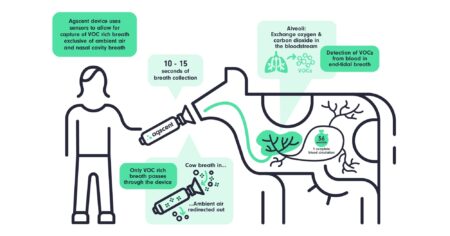On Thursday, the USDA announced a reorganization plan that includes the relocation of more than 2,000 employees from the National Capital Region (NCR) to regional hubs in major cities across the country.
In a memorandum detailing the plan, Secretary Brooke Rollins said it aims “to achieve improved effectiveness and accountability, enhanced services, reduced bureaucracy, and cost savings for the American people.”
The plan will be guided by four key pillars, according to the memorandum. Here’s a closer look at the sweeping changes entailed by each one.
Ensure the Size of USDA’s Workforce Aligns With Financial Resources and Priorities
“Over the last four years, USDA’s workforce grew by 8%, and employees’ salaries increased by 14.5% — including hiring thousands of employees with no sustainable way to pay them. This all occurred without any tangible increase in service to USDA’s core constituencies across the agricultural sector,” USDA said in a news release announcing the memorandum.
Citing these statistics, Rollins’ memorandum described the first reorganization pillar as “another step of the department’s process of reducing its workforce.”
USDA has fully leveraged voluntary programs to reduce its workforce and is committed to continuing this approach, the memorandum said. The programs include the Deferred Resignation Program, Voluntary Early Retirement Authority, and Voluntary Separation Incentive Payments.
As of July 24, more than 15,000 individuals had voluntarily elected deferred resignation.
Reassignments, both directed and voluntary, may also be used to align with mission priorities, according to the memorandum.
“Focused and limited reductions in force will be implemented only if needed and only after approval by USDA’s deputy secretary,” the memorandum said.
Bring USDA Closer to Its Customers by Relocating Resources
“American agriculture feeds, clothes, and fuels this nation and the world, and it is long past time the department better serve the great and patriotic farmers, ranchers, and producers we are mandated to support. President Trump was elected to make real change in Washington, and we are doing just that by moving our key services outside the beltway and into great American cities across the country,” Rollins said in USDA’s statement.
About 4,600 of USDA’s employees work within the National Capital Region, which has one of the highest costs of living in the country — the federal salary locality rate is 33.94%.
In light of this, and to ensure USDA is closer to those it serves, the second pillar involves relocating much of USDA’s staff from the Washington, D.C., area to five hub locations in North Carolina, Missouri, Indiana, Colorado, and Utah.
USDA will maintain two additional core administrative support locations in Albuquerque, New Mexico, and Minneapolis.
Hub location selection took into account existing concentrations of USDA employees and costs of living.
As part of this pillar, several USDA buildings are set to close: the South Building, Braddock Place, the Beltsville Agricultural Research Center, and the George Washington Carver Center.
Ultimately, the agency’s goal is to have 2,000 employees or fewer within the NCR.
Eliminate Management Layers and Bureaucracy
The third pillar outlines the reduction or elimination of regional offices and other management layers. “To promote coordination across USDA, regional offices and other similar management layers will be co-located in the hub locations to the greatest extent possible,” according to Rollins’ memorandum.
This is how various agencies within the department will be affected, as laid out in the memorandum:
- The Agriculture Research Service will eliminate area offices, and residual functions will be performed by its Office of National Programs.
- The National Agricultural Statistics Service will consolidate its 12 existing regions into the five hubs over multiple years.
- The Food and Nutrition Service will reduce its regions from seven to five and align locations with hubs and service centers over a two-year period.
- The Forest Service (FS) will phase out the nine regional offices over the next year, with implementation activities taking into consideration the ongoing fire season. FS will maintain a reduced state office in Juneau, Alaska, and an eastern service center in Athens, Georgia. Current stand-alone research stations will be consolidated into a single location in Fort Collins, Colorado. FS will retain the Fire Sciences Lab and Forest Products Lab.
- The Natural Resources Conservation Service will align its regional structure with the five hub locations.
- Animal and Plant Health Inspection Service centers will remain at current locations as they are located in the hub locations.
Consolidate Support Functions
The fourth and final pillar outlined a dozen ways USDA plans to consolidate support functions within the agency.
Those plans include consolidating civil rights functions into the Office of the Assistant Secretary for Civil Rights, consolidating Freedom of Information Act and related information management functions within the Office of General Counsel, and consolidating Legislative Affairs functions into the Office of Congressional Relations.
Read the full list of planned consolidations in the memorandum.


:max_bytes(150000):strip_icc()/LukeBryanPRphoto-84e3559aa0964e42b3ad96b2132eb349.jpg)
:max_bytes(150000):strip_icc()/SMinnesota1025-2000-83ff162cd24b4b0fb5065466fe80a0d5.jpg)
:max_bytes(150000):strip_icc()/r4d092124_rrd1-5d0657ac040743a2a4c5ebf998902de0.jpg)


:max_bytes(150000):strip_icc()/54538683377_aba0c004fe_o-43b17214edc64125ad88751b17f1ac7a.jpg)

:max_bytes(150000):strip_icc()/Markets-1-Cattle-dramatic-up-5-0687ebaec7fc487bac9c10a7f442eea8.jpeg)
